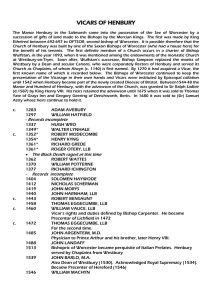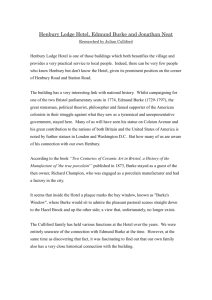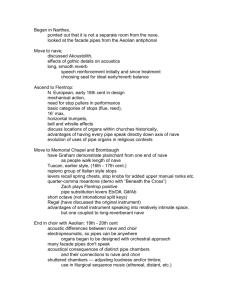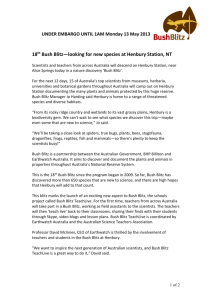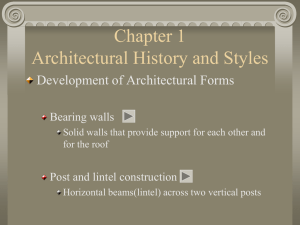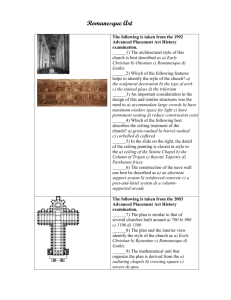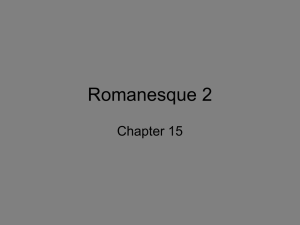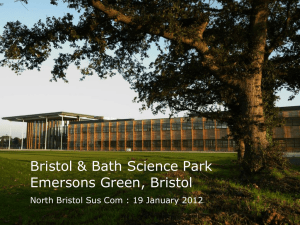The History of St Mary`s
advertisement
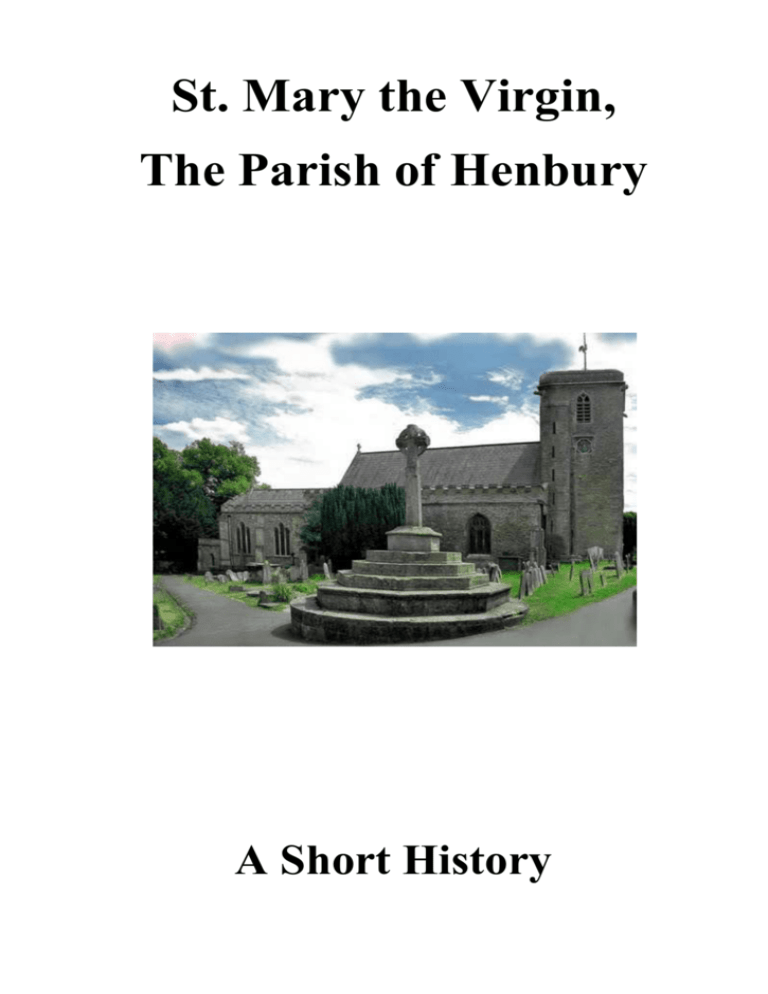
St. Mary the Virgin, The Parish of Henbury A Short History Welcome to St Mary the Virgin, the Parish of Henbury. The history of the church dates from the Anglo-Saxon kingdom of Mercia, which included most of what later became Gloucestershire. In 692 the Mercian King, Ethelred son of Penda, gave lands to the second Bishop of Worcester in what was then known as “Henbury in the Saltmarsh.” It was a large parish, going as far north as Aust. Today the parish is smaller though, in size, said to be the largest in the Bristol diocese and it stretches from Cribbs Causeway out to the Severn Estuary, including Brentry, Henbury and the village of Hallen. For the Bishops of Worcester Henbury seems to have been a favourite place. They signed many of their important records in Henbury and used the manor chapel for their ordinations. No details of the first church remain though records show that in 1093 Bishop Wulfstan gave the monks of the Cathedral Priory of Worcester the churches of Westbury-on-Trym and Henbury as endowments. The first Norman building was succeeded by the present one which was begun in the 12th Century, probably under Bishop Mauger who held the See until 1198. Almost one hundred years later Bishop Giffard ordered the parishioners of Henbury to rebuild the chancel, which they duly did, making it longer and with the marked northward slant we see today. The nave arcades, each of six arches, are the church’s most important early Gothic work. The two eastern pillars were once rounded in the Norman manner, and the pillars, with moulded capitals, are tall and dignified, supporting arches whose flat undersides and orders lack the more common cut chamfers of their period. At the western end of each arcade small, triply shafted capitals, or responds, are also a rare feature. The lower part of the tower, with its lancet window and a staircase doorway with shouldered head, is also early Gothic. The top part with its ogee shouldered windows was added in the fourteenth century. At the same time the clerestory was added above the nave arches. More light was added in the fifteenth and sixteenth centuries through the present Perpendicular windows of various sizes and designs. One fitting of the new church still to be seen is the early thirteenth century piscina, situated in the Sanctuary. It is modelled, in miniature, on the west doorway of Llandaff cathedral – though no one seems to know why! Much remained unaltered until the eighteenth century when Henbury had become home to several of the prominent families of Bristol, the Astreys, the Harcourts, the Earl of Suffolk and Bindon, a branch of the Long Ashton Smyths and the Sampsons. At Kings Weston there were the Southwells. Their wealth provided the canopied pulpit, altarpiece and box pews that were among the splendours of their day. The medieval roof was hidden by a curved plaster ceiling and hat pegs, of which the stumps alone remain, were hammered into the pillars of the nave! In 1806 the medieval font, now in the churchyard, was replaced by the current black marble one. A glass screen was put into the tower and in 1812 a gallery added into which an organ, from St Mary-le-port in the City, was placed. In 1814 the hanging candelabra were added, now converted to electricity. In 1824 local architect RS Pope repaired the nave and raised the exterior of the roof to its former medieval level. St Mary’s now experienced a series of major changes, first by Rickman and Hutchinson from 1830-1835, then under the celebrated Victorian George Street whose work includes Bristol Cathedral. The vestry and pulpit, of Painswick stone, were added. The north chapel of the chancel was enlarged, in the eastern bay of the nave the arcade arches were rebuilt and a wide chancel arch replaced the narrower medieval one. The Georgian double box pews were replaced by forward facing ones and new brass chandeliers were added to supplement those in the nave. Street’s work, radical for his day, included unblocking the clerestory in the nave, complete redesign of the chancel in the thirteenth century manner and a new east window of five lights. The floor was raised; new choirs stalls, chancel screens and pews were also installed. Over £5,000 was spent, though the spire, intended to rival St Mary Redcliffe, was never built. The church, which had been closed since May 1877 re-opened on Easter day, 1878. The building remains substantially as Street designed it. Perhaps one of the most important and influential vicars of Henbury dates from this period. Canon John Way followed his father as vicar in 1860 and was succeeded by his son in 1906. Born in the Vicarage in 1837, he was eventually made a Canon of Bristol cathedral in Queen Victoria’s Jubilee year of 1897. Like his monarch he must have seemed a permanent fixture, symbol of Victorian stability and influence. When he died, in February 1917, he was buried in the south Churchyard. Other items of interest: There are many fine monuments commemorating families of the eighteenth and nineteenth centuries prominent in the parish. Now under the tower but once in the sanctuary is a fine work of Grinling Gibbons for the Southwell family. In the nave a fine achievement of the arms of William IV dates from the 1835-36 restoration. It is probably one of the very last before the style changed with Queen Victoria in 1837 to that which remains in use by the current monarch. The tower has a full peal of eight bells. Of these three were cast in 1717 by Evans of Chepstow; the full peal was first rung on January 25th 1902 and in celebration of the centenary a similar peal was achieved exactly one hundred years later by the present ringers. Celebrated residents of Henbury Churchyard include the Egyptologist Amelia Edwards, on the north side near the priest’s vestry. But no monument is more poignant or visited than that of Scipio Africanus, servant to the Earl of Suffolk and Bindon, who died in 1720 aged only 18 years. Individuals and groups come from all over the world to remember this young man and the role he and countless others played in the history and fortunes of the City of Bristol. Most important perhaps is the awareness that still, after 1300 years, this site remains a place of Christian worship. Week by week the congregation gathers to sing God’s praises and to offer their prayers for the life of the church and the world. Still, through Baptisms, Weddings and Funerals St Mary’s opens her doors to the community of Henbury, Brentry and Hallen as she will, God willing, for centuries to come. For information about services please contact the Administrator on 0117 959 3757. David Lloyd. Vicar 2002. From notes prepared by Revd. Barry Trotter and Mr Bryan Little
